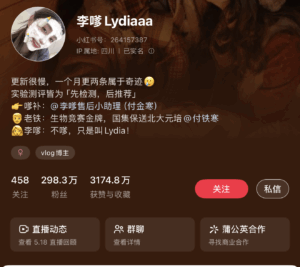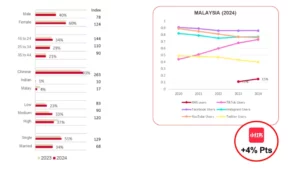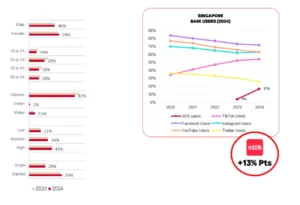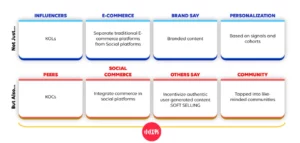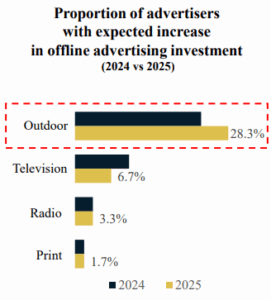RedNote—also known by its Chinese name Xiaohongshu—is a Chinese social-commerce platform that blends content sharing and shopping. First launched in 2013 by Miranda Qu and Charlwin Mao in Shanghai, it began as a lifestyle and travel note app. Over time, it evolved into a full social and e-commerce ecosystem. Today, RedNote reaches hundreds of millions of users and plays a major role in China’s digital retail and content landscape.

What is RedNote?
What is RedNote? It’s a social media and e-commerce hybrid, known in China as Xiaohongshu (literally “Little Red Book”). Founded in 2013, RedNote started as a community for sharing shopping tips, travel experiences, and product reviews. Over the years, it has become a key platform for both creators and brands.
RedNote now serves over 300 million monthly active users and records more than 50 million daily interactions. In early 2025, the platform also gained traction in Western markets as users searched for alternatives to TikTok.
The name “RedNote” carries cultural significance. “Xiaohongshu” translates to “Little Red Book,” symbolizing a personal notebook of experiences and recommendations. The color red, associated with luck and prosperity in Chinese culture, aligns with the brand’s identity.
What are the key features of the RedNote app?
Content types and community structure
Users can post short videos, photo carousels, long-form text, and product “notes.” The community centers on lifestyle topics such as beauty, fashion, food, travel, wellness, and home.
RedNote thrives on authentic, user-generated content rather than influencer-dominated feeds. Everyday users often gain traction by posting honest reviews and relatable experiences. The platform’s culture of “planting grass” (sharing things users like to inspire others) drives engagement and product discovery.
Shopping and e-commerce functionalities
RedNote integrates shopping directly into its ecosystem. Users can tag products in posts, link to in-app stores, and complete purchases through the app. This seamless connection between content and commerce makes discovery natural and organic.
Most e-commerce functions are available only in mainland China, while international users may see limited access. Still, the platform’s product recommendation model continues to influence purchasing behavior both inside and outside China.
How does the RedNote algorithm work?
Personalization and discovery
RedNote’s recommendation system prioritizes user interest and relevance rather than follower count. It analyzes likes, saves, comments, and viewing behavior to deliver personalized content.
Users discover posts through multiple tabs such as Explore, Nearby, and Search. This mix of interest-based and location-based discovery encourages users to explore new creators and trends.
Implications for content creators
Because RedNote is interest-driven, smaller creators have strong potential to reach large audiences. The platform rewards authenticity and quality over popularity, giving emerging voices more room to grow. However, creators must tailor content to fit the community’s lifestyle focus to maintain engagement.
How does RedNote compare to TikTok and other social platforms?
RedNote launched in 2013—three years before TikTok—and initially focused on lifestyle and commerce, while TikTok centers on short-form entertainment.
Unlike TikTok or Instagram, which rely on external links for shopping, RedNote enables users to browse and purchase products natively within the app. Its feed also differs: multiple posts appear on one screen instead of TikTok’s single-video display.
RedNote enforces stricter moderation, especially for political or sensitive content. Despite this, it continues to attract users seeking an authentic, community-driven experience.
RedNote vs. Xiaohongshu: Are they the same?
Yes. RedNote is the international name for Xiaohongshu. The app experience is nearly identical, but some features—like in-app shopping or live streaming—may vary depending on location.
RedNote and the TikTok ban: Impact on user migration
Speculation over a potential TikTok ban led many users to explore RedNote as an alternative. The platform quickly gained millions of new users from outside China, fostering cross-cultural engagement and expanding its global footprint.
International availability and language support of RedNote
RedNote is available worldwide through iOS, Android, and web. While some interface elements appear in English, most content remains in Mandarin. Full English support is not yet available, though the company continues to improve translation and subtitle tools.
Safety, security, and user privacy concerns on RedNote
Some regions, have raised concerns about data privacy and regulatory compliance. RedNote’s terms of service are primarily in Chinese, which can be challenging for non-Chinese speakers.
The platform collects data under Chinese regulations and actively moderates politically sensitive or inappropriate content. Users are encouraged to follow community guidelines to maintain a positive and compliant environment.
Monetization and opportunities for content creators on RedNote
RedNote does not currently offer direct monetization programs such as ad revenue sharing. Instead, creators earn income through brand collaborations, sponsorships, and affiliate sales.
The Dandelion Program connects verified influencers with brands for campaign opportunities. Verification requires identity checks, such as a passport upload. Music and video usage rules vary by region and are stricter than those on Western platforms.
Compared to TikTok, Instagram, and YouTube, RedNote’s monetization system is less developed but growing through partnerships and commerce-based engagement.
How to download and start using the RedNote app
You can download RedNote from the iOS App Store or Google Play, or use it on desktop via Xiaohongshu.com.
To get started:
• Install the app and register with your phone number or email.
• Complete verification if prompted.
• Explore the Explore, Follow, Nearby, and Search tabs.
• Tap the “+” icon to create posts, add text or media, and tag products or locations.
International users may face restrictions on shopping features but can still post and engage with community content.
Frequently asked questions about RedNote
Is RedNote free to use?
Yes. All basic posting and browsing features are free.
What is RedNote app?
It’s a lifestyle and shopping platform combining social media and e-commerce, originally known as Xiaohongshu in China.
Can I shop on RedNote from outside China?
Shopping features are limited for international users, though browsing and product discovery remain open.
Is RedNote safe and how does it handle my data?
RedNote follows Chinese data laws and applies strong moderation to protect the community. Users should review privacy settings carefully.
What is the difference between RedNote and Xiaohongshu?
They are the same app. RedNote is the English name; Xiaohongshu is the Chinese version.
Can I monetize my content on RedNote?
There’s no built-in monetization system. Creators usually earn through brand partnerships or sponsorships.
Is RedNote available in English?
Some menus and interface elements are in English, but most content remains in Mandarin.
How does RedNote’s algorithm differ from TikTok’s?
RedNote focuses on interest-based recommendations. TikTok relies more on previous engagement and followers.
What are the main content restrictions on RedNote?
Political or sensitive topics and non-compliant content may be censored.
How can brands collaborate with creators on RedNote?
Brands can connect through influencer partnerships or the Dandelion Program after identity verification.






